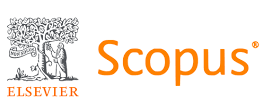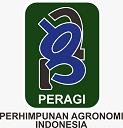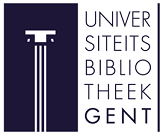Comparative Study: Internal Marketing Value of Shallot Hydroponic Performance Using NFT vs. DFT Across Two Growth Periods
Abstract
Urban farming has emerged as a strategic response to the challenges of land scarcity and food security in metropolitan areas. This study investigates the financial performance and internal marketing value of shallot (Allium cepa var. aggregatum) agribusiness cultivated hydroponically using Nutrient Film Technique (NFT) and Deep Flow Technique (DFT) systems across two planting cycles. Conducted as a case study at P4S Galih Jaya, the research employed a quantitative descriptive approach, combining direct observation, financial documentation review, and structured stakeholder interviews. Key metrics, production output, net income, Benefit-Cost (B/C) ratio, and Break-Even Point (BEP), were calculated using standard agribusiness financial formulas. Internal marketing indicators, including employee understanding, decision alignment, and motivation, were assessed through pre- and post-cycle surveys and integrated into participatory training sessions. Results indicated that the DFT system in cycle 2 yielded the highest net income (IDR 2,036,725) and B/C ratio (3.6), while the NFT system in cycle 1 incurred a financial loss (IDR -10,155) with a B/C ratio of 0.9. These findings were embedded into internal communication tools and stakeholder training sessions to foster data-driven decision-making. Internal marketing indicators showed marked improvement between periods, demonstrating the strategic value of integrating financial literacy into agribusiness operations. The study concludes that the selection of a hydroponic system not only affects profitability but also internal stakeholder engagement. The comparative study framework offers a replicable model for urban farmers seeking to align technical performance with internal adoption and strategic planning. Further research is recommended across successive planting periods to assess long-term viability and deepen internal marketing impact.
Keywords
Full Text:
PDFReferences
Alexandria, M., Griffith, C., Buss, G. P., Carroll, P. A., Yang, X., Jr, J. L. G., Papkov, G., Bauer, S., Jackson, K., & Singh, A. K. (2023). The Comparative Performance of Nutrient-Film Technique and Deep-Water Culture Method of Hydroponics for GREENBOX Technology. Agricultural Sciences, 14, 1108–1120. https://doi.org/10.4236/as.2023.148074
Anika, N., & Putra, E. P. D. (2020). Analisis Pendapatan Usahatani Sayuran Hidroponik Dengan Sistem Deep Flow Technique (Dft). Jurnal Teknik Pertanian Lampung (Journal of Agricultural Engineering), 9(4), 367. https://doi.org/10.23960/jtep-l.v9i4.367-373
Brown, D. M., Pattinson, S., Sutherland, C., & Davies, M. A. P. (2025). Internal marketing and organizational performance: A systematic review and future research agenda. Journal of Business Research, 194(January 2024), 115384. https://doi.org/10.1016/j.jbusres.2025.115384
Dahlianawati, D., Sofyan, S., & Jakfar, F. (2020). Analisis Pendapatan Usahatani Bawang Merah (Allium ascalonicum L) Di Kecamatan Banda Baro Kabupaten Aceh Utara. Jurnal Ilmiah Mahasiswa Pertanian, 5(4), 31–44. https://doi.org/10.17969/jimfp.v5i4.15867
Dianto, A. A., Susanto, H., Pertanian, F., & Wijaya, U. (2023). Analisis Kelayakan Usaha Hidroponik Bawang Merah pada UMK Fresh Hidroponik di Kecamatan Kedamean Kabupaten Gresik. Jurnal Agribisnis Wijaya Putra Surabaya (Agriwitas), 2(1), 62–79. https://doi.org/https://doi.org/10.38156/agriwitas.v2i1.92
Gallagher, M. (2025). What is the Difference between NFT and DFT Hydroponics? Green Packs. https://greenpacks.org/what-is-the-difference-between-nft-and-dft-hydroponics/
Hindarti, S., & Maula, L. R. (2020). Shallot Agribusiness Development Strategy in Purworejo Village, Malang District. Journal of Sustainable Development Science, 2(2), 69–77. https://doi.org/10.46650/jsds.2.2.1018.69-77
Ifarm. (2024). iFarm develops a cutting- edge DFT system for record yields iFarm develops a cutting-edge DF system for record yields. https://ifarm.fi/blog/ifarm-increased-vertical-farming-efficiency
Indra, M., & Sri, H. (2019). Rancangan Kegiatan Education Farming Usaha Tani Hidroponik Di Pt Abc Sebagai Urban Farming. Karya Ilmiah Mahasiswa, 1–6.
Lailandra, A., Kusnadi, N., & Harmini, H. (2024). Technical Efficiency of Shallot Production in Production Centers in Java and Outside Java. Agrisocionomics: Jurnal Sosial Ekonomi Pertanian, 8(2), 414–423. https://doi.org/10.14710/agrisocionomics.v8i2.18021
Maulana. (2019). Analisis Pendapatan Usahatani Bawang Merah (Allium ascalonicum L.) Di Desa Purworejo Kecamatan Ngantang Kabupaten Malang.
Muskarim, M., Samdin, S., Masri, M., Sinarwaty, S., Hajar, I., Nurwati, N., Mahrani, S. W., Saleh, S., & Aliddin, L. A. (2024). Human Resource Management Practices in Agricultural Development ; the Role of Leadership , Motivation and Work Engagement. Journal of Global Innovations in Agricultural Sciences, 12, 758–768.
Nurunisa, V. F., Hotman, J., Rifin, A., Wicaksana, B. E., & Sigit, A. (2024). Food Supply Chain Network and Market Analysis of Shallot in Indonesia (Case Study: Brebes District). Jurnal Manajemen Dan Agribisnis, 21(3), 408–419. https://doi.org/10.17358/jma.21.3.408
Pölling, B., Sroka, W., & Mergenthaler, M. (2017). Success of urban farming’s city-adjustments and business models—Findings from a survey among farmers in Ruhr Metropolis, Germany. Land Use Policy, 69. https://doi.org/10.1016/j.landusepol.2017.09.034
Putra, Y. K. W. (2019). Analisis Proses Pengembangan Elemen-elemen Mikro Concept Design Di Perusahaan Start Up (Studi Kasus Perusahaan Startup KDI). Journal of Chemical Information and Modeling, 53(9), 45.
Rubio-Asensio, J. S., Parra, M., & Intrigliolo, D. S. (2019). Open field hydroponics in fruit crops: Developments and challenges. Fruit Crops: Diagnosis and Management of Nutrient Constraints, 419–430. https://doi.org/10.1016/B978-0-12-818732-6.00030-7
Sanyé-Mengual, E., Specht, K., Vávra, J., Artmann, M., Orsini, F., & Gianquinto, G. (2020). Ecosystem services of urban agriculture: Perceptions of project leaders, stakeholders and the general public. Sustainability (Switzerland), 12(24), 1–23. https://doi.org/10.3390/su122410446
Sedana, G. (2020). Urban Farming sebagai Pertanian Alternatif dalam Mengatasi Masalah Ekonomi pada Masa dan Pasca Pandemi Covid-19. Seminar Nasional, 1–6.
Sroka, W., Sulewski, P., Mikolajczyk, J., & Król, K. (2023). Farming under Urban Pressure: Business Models and Success Factors of Peri-Urban Farms. Agriculture, 13(6), 1216. doi.org/10.3390/agriculture13061216
Suharni, S., Waluyati, L. R., & Jamhari, J. (2017). The Application of Good Agriculture Practices(GAP) of Shallot in Bantul Regency. Agro Ekonomi, 28(1), 48. https://doi.org/10.22146/jae.25022
Sundari, R. S. (2024). Setaman Cinta Pertanian Kota Jilid 1 (1st ed.). https://books.google.com/books?hl=en&lr=&id=Q0wZEQAAQBAJ&oi=fnd&pg=PA1&dq=smart+farming+dalam+pendidikan&ots=jJoFaGjikS&sig=szq4ljIfJ67p9FqKc8c9YZ_pftk
Sundari, R. S., Sulistyowati, L., & Noor, T. I. (2021). Soilless Culture in Urban Farming. International Conference on Biodiversity, Microbiology to Multiple Industrial and Environmental Application to Support Sustainable Development and Improve Human Welfare, 18 December 2021At: Surakarta, Center of Java, Indonesia, 8(2), 29–59. https://doi.org/DOI: 10.13057/asnmbi/m080202
Sundari, R. S., Sulistyowati, L., Noor, T. I., & Setiawan, I. (2023). Break Barriers: The Woman Roles in Urban Farming Development in Indonesia. Baltica Journal, 36(4), 48–67. https://www.researchgate.net/publication/370410867_BREAK_BARRIERS_THE_WOMAN_ROLES_IN_URBAN_FARMING_DEVELOPMENT_IN_INDONESIA
Telaumbanua, M. (2020). Penerapan Rancangan Sistem Hidroponik Otomatis Untuk Budidaya Bawang Merah (Allium Ascanonicum L.) Dan Simulasi Analisis Biaya. Sinta 3, 152.
Wemaf, P., Siwalette, J. D., & Lawalata, M. (2023). Analisis Pendapatan Usahatani Bawang Merah (Allium cepa) di Desa Yafawun Kecamatan Kei Kecil Timur Kabupaten Maluku Tenggara. Agrilan : Jurnal Agribisnis Kepulauan, 11(3), 260. https://doi.org/10.30598/agrilan.v11i3.1883
Widiati, S., Hasan, Z. M., & Syarif, R. (2024). Strategi Pengembangan Urban farming Melalui Usahatani Hidroponik Berbasis Kemandirian Ekonomi Lokal Urban farming Development Strategy Through Hydroponic Farming Based on Local Economic Independence. Journal Of Agribusiness Science, 8(1), 63–77.
Zhillan. (2021). Perbedaan NFT dan DFT, Mana Yang Lebih Baik? https://www.zhillan.com/perbedaan-nft-dan-dft-mana-yang-lebih-baik/
Синюк, О. В., Станько, Т. М., & Khraplyvyi, P. E. V. (2025). Internal Communication in Agribusiness : Challenges, Problem, and Effective Solutions. Науково-Виробничий Журнал «Бізнес-Навігатор» УДК, 1(78), 424–429. https://doi.org/https://doi.org/10.32782/business-navigator.78-71 Синюк
Refbacks
- There are currently no refbacks.



























